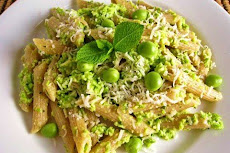 Unsavory Additions to Many Foods Not Uncommon
Unsavory Additions to Many Foods Not Uncommon By Radha Chitale, ABC News
Sept. 5, 2009 — Ready to grill dinner recently for himself and his wife, Fred DeNegri, 55, popped a can of Diet Pepsi to sip while he cooked. But one swig of the cola was enough to put him off his meal.
"At the time, I asked him and he couldn't even describe [the taste]," said Fred's wife, Amy DeNegri, 54, of Ormond Beach, Fla. "He said, 'I've never tasted anything so awful in my life.'"
Dumping the liquid, the couple said, they discovered a small animal macerating in the can. Testing by the U.S. Food and Drug Administration confirmed that the animal was either a frog or a toad, although the agency found no connection to the Pepsi plant where the soda was bottled.
"I would have been throwing up," Amy DeNegri said, if she had been the one drinking the soda.
While the DeNegri's amphibian-infused soda sounds like the stuff of urban legends, in reality, such transgressions can occur. And while these incidents may not occur often or pose significant health risks, the ick factor can be through the roof.
"What's a challenge with this is that lots of bottling plants and lots of processing plants have rather frequent problems with animals getting into their production facility," said Jaydee Hanson, a policy analyst at the Center for Food Safety in Washington, D.C. "This is one of many examples of why you need a quality control system that works virtually all the time."
Value-Meal Deal (Breaker)A Virginia woman made headlines in 2000 for finding a whole, fried chicken head in a box of McDonald's chicken wings. Another woman from California was dining at McCormick and Schmick's, a seafood chain, when she found a condom in her clam chowder.
Gastronomic flukes can cause significant emotional distress, but they rarely result in poor health consequences. Cola, for example, is too acidic to support most harmful bacteria.
"With soda, it's low pH, it's carbonated, and kills most pathogens to be concerned about, so there's not much of a [health] risk," said Chuck Gerba, a microbiologist at the University of Arizona.
Indeed, there is greater risk associated with poor food preparation, or from fresh foods that are stored where insects and rodents can access them compared with highly processed foods.
A Frog in Your Drink Can Be Emotionally Distressing "The pattern that people need to worry about is in food products where pathogens are introduced into food when you're not expecting them," said Hanson, citing incidents where salmonella and E. coli have been found in peanuts and spinach, respectively. "They're happening way more frequently than the odd frog in the Pepsi can."
Amy DeNegri said the first thing she did after discovering the frog or toad was to contact poison control but that her husband had no resulting health problems from drinking the contaminated Diet Pepsi.
"Mentally, yes," DeNegri said. "Other than that, no."
Chocolate Covered ... Insects? Unsavory additions to some foods are a widely accepted fact, however. The FDA allows a certain amount of foreign contaminants in many foods. For example, chocolate may contain up to 60 insect fragments and one rodent hair per 100 gram sample.
The FDA guidelines for food defects exist primarily for natural, plant-based foods where exposure to insects and rodents is a normal byproduct of how the food is cultivated, stored and processed.
"They're rare but there's always a certain amount of risk involved, and I think you just have to go with that," said Keith-Thomas Ayoob, director of the nutrition clinic at the Albert Einstein College of Medicine in New York City. "Anytime there's human involvement, a factory is involved, once in a while there's going to be an [incident]."
But no such allowable levels for insect, rodent or other kind of contaminant exist for soft drinks, said FDA spokesman Michael Herndon.
Between Aug. 4 and Aug. 11, the FDA inspected the bottling plant in Orlando, Fla., where DeNegri's Pepsi came from and found no objectionable conditions and no evidence that might associate the plant with the problem, such as frogs or toads in the building.
FDA Has No Leads on Where the Frog or Toad Came From Siobhan Delancy, a spokeswoman for the FDA, said investigators have not concluded how DeNegris' Diet Pepsi came to be contaminated.
The Pepsi Bottling Co. stood by its production facilities and said a breach in quality control was unlikely.
"There was nothing in the FDA test results that conclude that this was a manufacturing issue," said Jeff Dhanke, director of public relations for the Pepsi Bottling Group. "We have confidence that this is virtually impossible to have happened in a production environment. The well-being of our consumers -- there's nothing more important than that."
Amy DeNegri said she and her husband want an apology and some form of compensation from Pepsi, which they have not gotten and they are now seeking legal advice.














